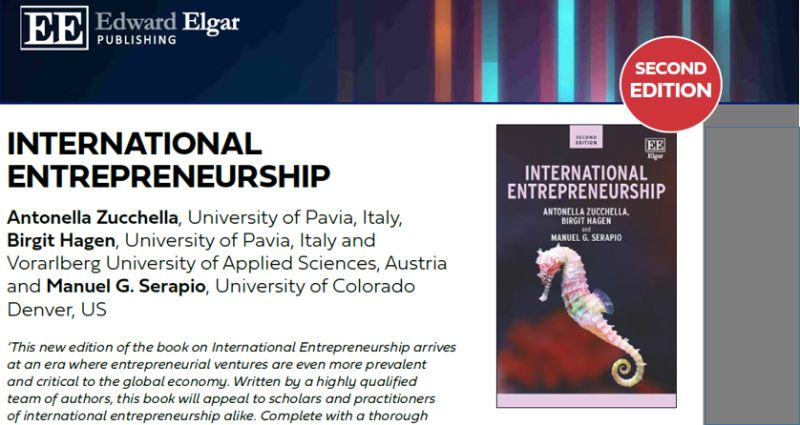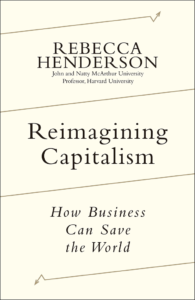In a cosy café, two experts chatted earnestly about global business over steaming cups of coffee. Their talk was far from casual, diving deep into the differences between international business and international entrepreneurship.
Their ideas sprang from a recent book International Entrepreneurship by Antonella Zucchella, Birgit Hagen and Manuel G. Serapio. It focuses on how businesses see foreign markets.

One view, called international business theory, discusses the risks of entering new global places. It suggested being careful and taking small steps to keep a company strong while managing resources well.
Lavazza, the big Italian coffee company, slowly started in France to avoid big risks and grow safely. But then there were businesses like Hallmarq Veterinary Imaging that instead took big risks, being quick and creative, and made a new MRI concept known worldwide.
“A major difference persists between international business and international entrepreneurship: it is in the perspective they adopt in looking at foreign markets.”
Who is right? Difficult to say. These different ways just show how businesses see the world. Some, like Lavazza, moved slowly, planned a lot, and focused on management. Others, like Hallmarq, were bold, making big changes fast.
This difference doesn’t just show different ideas but also how big and fast the global business world changes. It makes us think about being adaptable, quick to respond to changes, and how to last long in this ever-changing world. Also, it makes us think about how important new ideas, taking risks, and ways to enter new markets are for businesses that want to grow beyond their borders.
Why do we care about this distinction?
This discussion matters a lot. For example, when we talk about the difference between international business and international entrepreneurship, we need to realise that first, they are NOT the same thing.
Second, they are more than just different ideas. It’s about different ways of thinking and doing things in the complicated global business world. One could embrace a managerial perspective of risk and cost management; somebody else could be more oriented towards innovation and creativity, rapid market penetration, adaptability and agility, risk-taking and resilience.
In other words, for example, making a clear distinction between the two helps individuals make informed career decisions. Recognizing the differences allows aspiring professionals to align their career goals with the specific field that resonates with their aspirations, skills, and preferences.
Also, for students, knowing this distinction guides them in selecting the right educational paths. It helps them choose programs or courses that cater to their interests, whether it’s international business management or entrepreneurship.
Business-wise, for established businesses or entrepreneurs, understanding these distinctions aids in formulating effective strategies.
Last but not least, clarity on international business and international entrepreneurship contributes to economic dynamism and growth. By nurturing a deeper understanding of these distinct approaches, policymakers, investors, and businesses can create environments conducive to fostering both structured growth and rapid innovation.
For me, I’ll keep diving into this book. I’ve spotted some interesting things about marketing. I’ll be back soon with more in a new article. Stay tuned! 😊
Cover image: Tazzina Lavazza,1996, design Claudio Caramel (Wikimedia)
- SEO Powered Content & PR Distribution. Get Amplified Today.
- PlatoData.Network Vertical Generative Ai. Empower Yourself. Access Here.
- PlatoAiStream. Web3 Intelligence. Knowledge Amplified. Access Here.
- PlatoESG. Carbon, CleanTech, Energy, Environment, Solar, Waste Management. Access Here.
- PlatoHealth. Biotech and Clinical Trials Intelligence. Access Here.
- Source: https://thisisoliver.co/2023/12/03/international-business-and-international-entrepreneurship-theyre-not-the-same-stuff-heres-why/
- :is
- :not
- 1
- 1996
- 425
- a
- About
- adopt
- aids
- align
- allows
- also
- and
- approaches
- ARE
- article
- aspiring
- At
- avoid
- back
- BE
- being
- between
- Beyond
- Big
- bold
- book
- borders
- both
- business
- businesses
- but
- by
- called
- CAN
- care
- Career
- careful
- casual
- cater
- Changes
- Choose
- clarity
- clear
- Coffee
- company
- complicated
- concept
- contributes
- Cost
- Cost Management
- could
- courses
- create
- Creative
- creativity
- deep
- deeper
- Design
- difference
- differences
- different
- difficult
- discussion
- distinct
- distinction
- diving
- do
- Doesn’t
- doing
- educational
- Effective
- else
- embrace
- Enter
- entering
- entrepreneurs
- entrepreneurship
- environments
- established
- ever-changing
- example
- experts
- far
- FAST
- field
- Files
- First
- focused
- focuses
- For
- foreign
- formulating
- fostering
- France
- from
- Global
- global business
- Goals
- Grow
- Growth
- Guides
- helps
- How
- How To
- HTTPS
- I’LL
- ideas
- image
- Imaging
- important
- in
- individuals
- Innovation
- instead
- interesting
- interests
- International
- international business
- into
- Investors
- IT
- Italian
- just
- Keep
- known
- Last
- least
- like
- Long
- looking
- Lot
- made
- major
- make
- MAKES
- Making
- management
- managerial
- managing
- Market
- Marketing
- Markets
- Matters
- max-width
- me
- more
- moved
- MRI
- Need
- New
- nurturing
- of
- on
- ONE
- or
- Other
- Others
- over
- paths
- penetration
- persists
- perspective
- planned
- plato
- Plato Data Intelligence
- PlatoData
- policymakers
- preferences
- professionals
- Programs
- Quick
- rapid
- recent
- recognizing
- resilience
- resonates
- Resources
- Respond
- right
- Risk
- risks
- safely
- same
- say
- see
- selecting
- show
- skills
- Slowly
- small
- some
- Soon
- specific
- started
- stay
- Steps
- strategies
- strong
- structured
- Students
- taking
- Talk
- than
- that
- The
- the world
- their
- Them
- then
- theory
- There.
- These
- they
- thing
- things
- think
- Thinking
- this
- to
- took
- towards
- two
- understanding
- us
- veterinary
- View
- want
- was
- ways
- we
- WELL
- were
- when
- whether
- while
- why
- with
- WordPress
- words
- world
- worldwide
- zephyrnet









